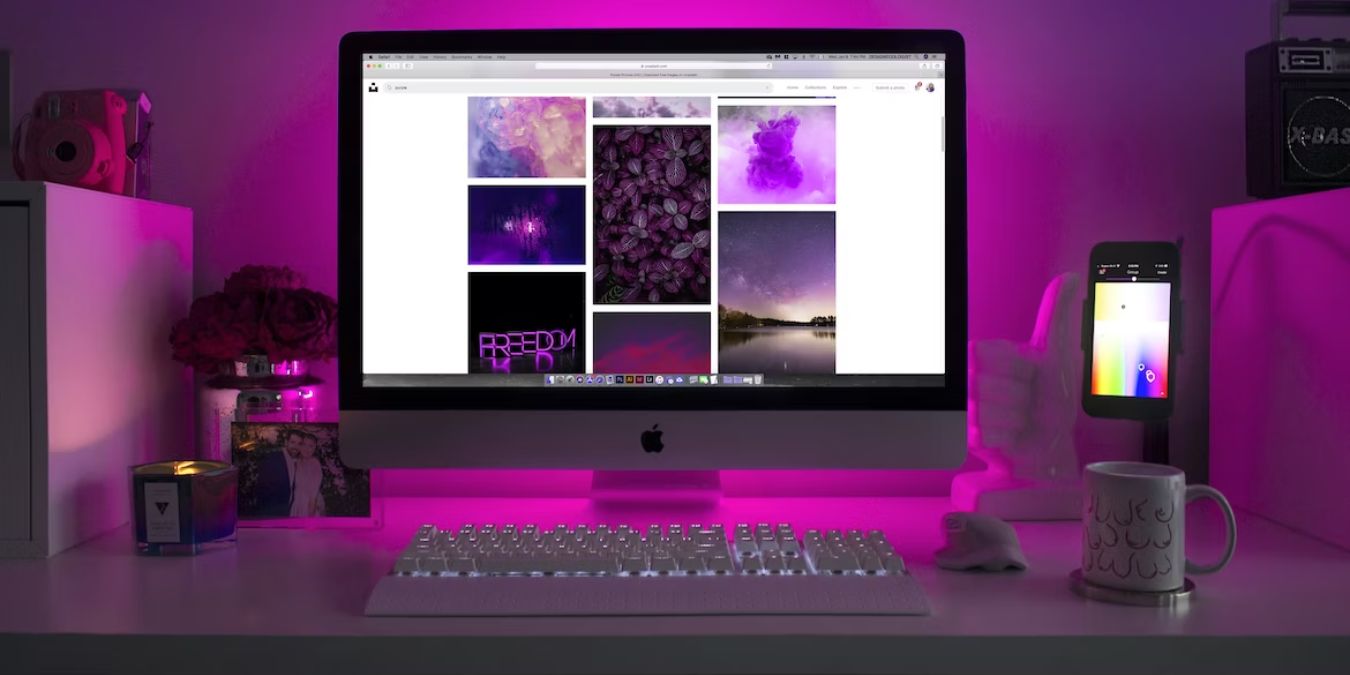
If you’ve ever customized your Mac’s wallpaper, only to find it mysteriously changing back to the default image after every restart, you know how frustrating it can be. It’s a common issue among Mac users, mostly caused by the “Dynamic Wallpaper” or “Change picture” features being enabled by mistake. This guide covers four practical and effective ways to stop your Mac wallpaper changing after a restart.
Why the Wallpaper on Your Mac Changes After a Restart
Dynamic Wallpapers: if you have a Dynamic wallpaper set as your default, it will change frequently throughout the day, often correlating with the sunrise and sunset, based on your current location. Built-in Dynamic Wallpapers feature natural landscapes and abstract images.
Multi-Monitor Setups: when you connect an external display to your Mac, the wallpaper settings may adjust to accommodate the different screen resolutions or configurations. To resolve this, disconnect the external display from your Mac, and choose your preferred wallpaper. Reconnect the external display, and restart the Mac.
Outdated Version of macOS: running older versions of macOS can result in software glitches that can contribute to wallpaper issues. Keep your Mac’s operating system up to date.
Memory Issues: resetting your Mac’s NVRAM and PRAM can remedy unexpected wallpaper behavior.
Tip: not sure how to reset your Mac’s NVRAM and PRAM? Check out our guide on fixing unresponsive apps and system freezes on your Mac.
1. Disable “Dynamic Wallpaper”
To stop the wallpaper from changing after a restart on your Mac, disable the Dynamic Wallpaper setting, and opt for a static wallpaper instead. In macOS, wallpapers are categorized as either static or dynamic.
By default, dynamic wallpapers may automatically switch between light and dark modes or change at specific intervals. But if you prefer a consistent desktop background, you can easily resolve this issue by following these steps:
Click the Apple menu in the top-left corner of your screen, and select System Settings. On older versions of macOS, this item will be labeled System Settings.
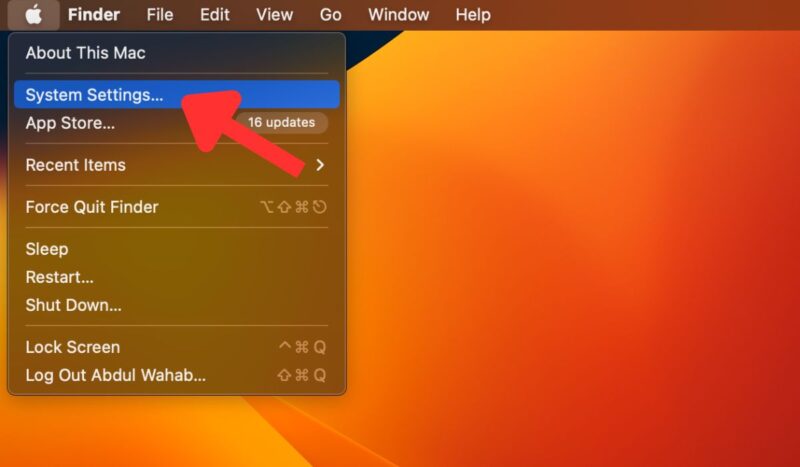
In the Settings window, click Wallpaper. Select a wallpaper from the Pictures tab. It contains static wallpapers that won’t change automatically.
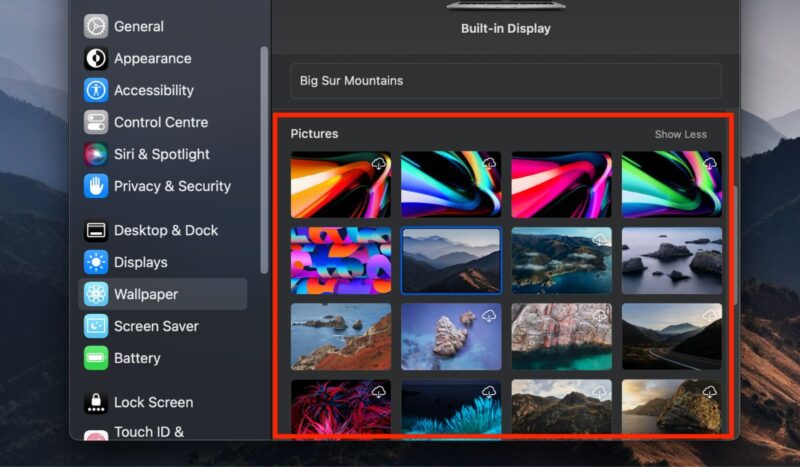
2. Disable the “Auto-Rotate” Feature
To prevent your wallpaper from changing on a Mac, you may need to disable the Auto-Rotate feature. Even if you have a static wallpaper selected, this setting can still cause the background to change after a restart. To disable this feature, follow these steps:
Open System Settings, and go to Wallpaper -> Colors. Look for the Auto-Rotate option in the Colors tab. If its borders are highlighted, it means this feature is enabled on your Mac. Click to disable it.
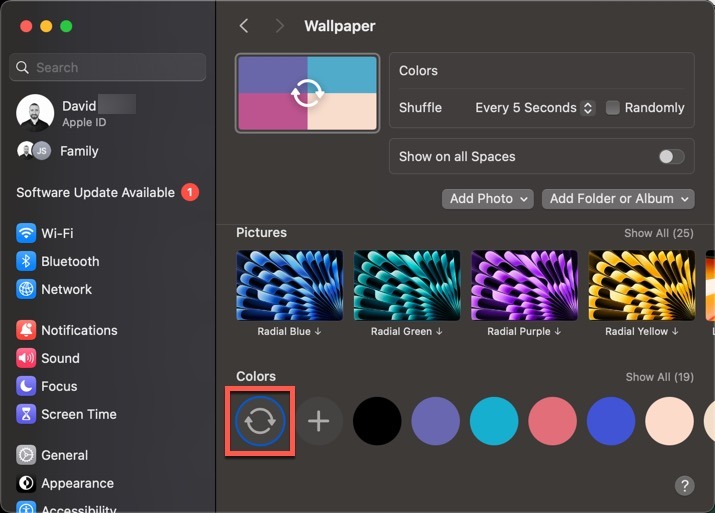
Alternatively, select an option to have it changed according to your desired routine.
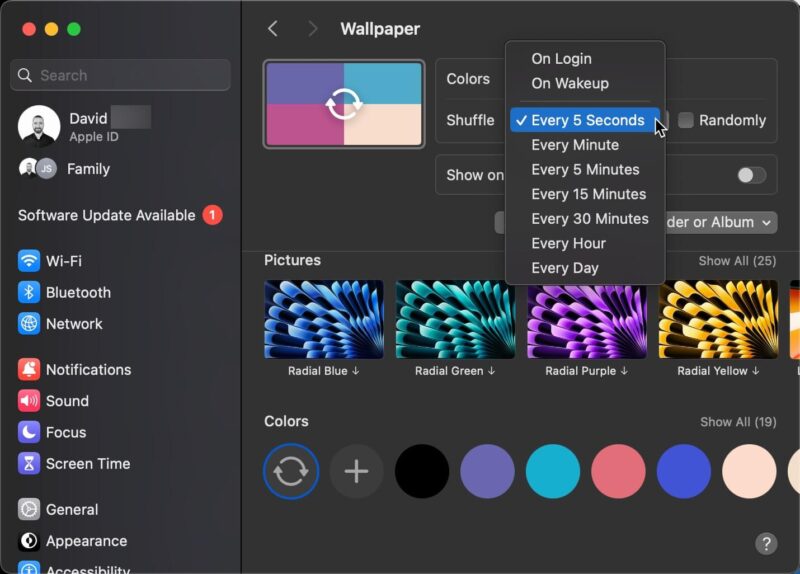
Good to know: if you are running macOS Ventura or later on your Mac, you can select any static wallpaper from the Wallpaper window to disable the Change picture feature.
3. Store a Wallpaper Locally on Your Mac
Using an online or built-in Mac wallpaper may seem convenient, but it can lead to your wallpaper changing back to a default setting after a restart. This happens because the system refreshes the wallpaper settings during startup, and if it fails to locate the wallpaper, it reverts to the default option.
However, there’s a simple solution to this issue. By storing the wallpaper offline on your Mac, you can ensure that it remains unchanged, even after a restart. Follow these steps to store the wallpaper on your Mac:
Find your desired wallpaper image. An easy way is to use a free stock image website, such as Unsplash. Download the image to your Mac, and save it in a dedicated folder. For example, you can create a “Wallpapers” folder in your Pictures library.
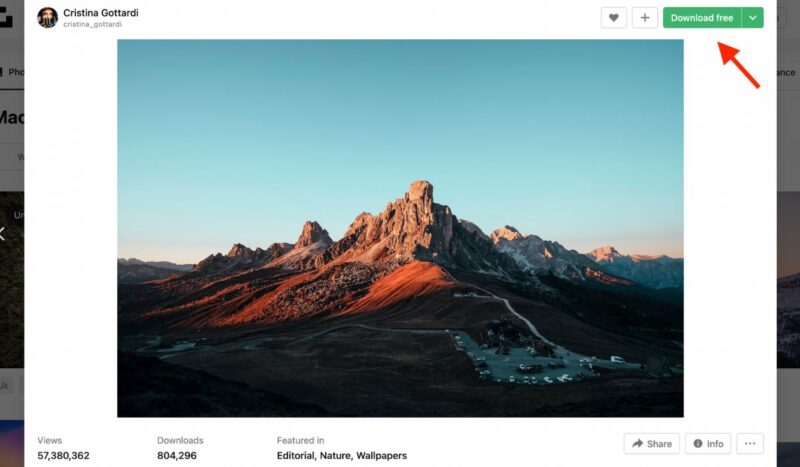
Go to System Settings -> Wallpaper on your Mac. Click the Add Folder or Album button, select your folder, then select your downloaded wallpapers.
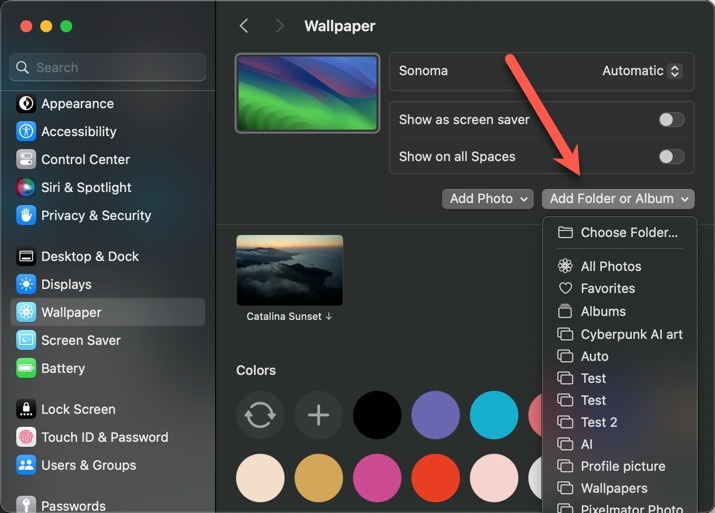
4. Delete the Picture Database File
Another effective way to address the issue of wallpaper changing on a Mac is to move the picture database file to the Trash. The database file, known as “desktoppicture.db,” is responsible for storing your Mac’s wallpaper configuration. If it becomes corrupted, your Mac may struggle to load the wallpaper after a reboot and default to the standard wallpaper. Follow these steps to resolve the issue, but do note that this method only works on macOS High Sierra and prior versions.
Delete the Picture Database File Using Terminal
Launch the Terminal app on your Mac. Find it in the Utilities folder in the Applications tab in Finder, or search for it using Spotlight. Hit command + space, type “Terminal,” then hit return.
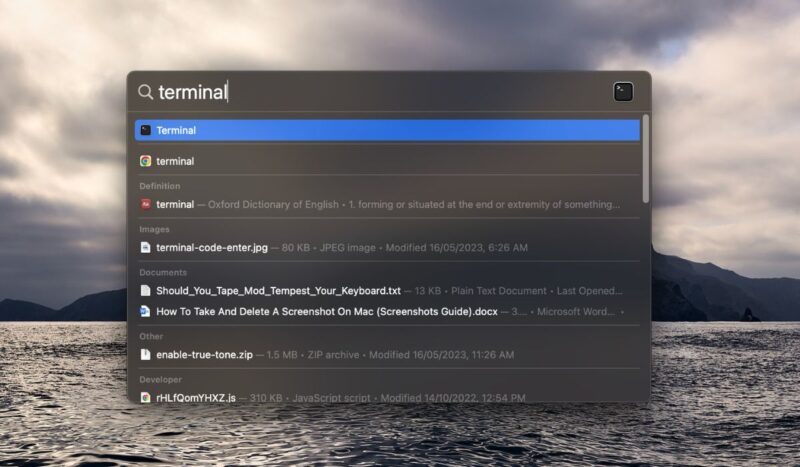
In the Terminal window, type the following command:
rm ~/Library/Preferences/com.apple.desktop.plist
Press enter to delete the picture database file responsible for wallpaper configuration.
Choose a static wallpaper of your choice, and restart your Mac. Upon reboot, macOS will create a new database file for the selected wallpaper, ensuring it remains unchanged after every restart.
Delete the Picture Database File Using Finder
If Terminal’s command-line interface seems tough, follow these steps to manually delete the picture database file on your Mac:
Open Finder by clicking the Finder icon in your Dock or selecting Finder in the top menu. Use the keyboard shortcut shift + command + G to open a Go to Folder dialog box on your desktop screen. Alternatively, click on the Go menu in the top menu bar, and select Go to Folder.
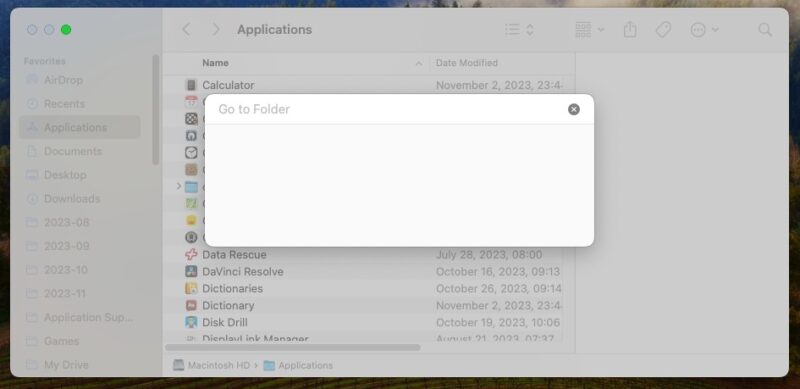
In the dialog box, paste the following path, “~/Library/Application Support/Dock/desktoppicture.db”, then press enter.
Finder will navigate to the folder that contains your wallpaper’s database file. Right-click (or Control-click) on the Desktop Picture database file, and select Move to Bin to delete the file.
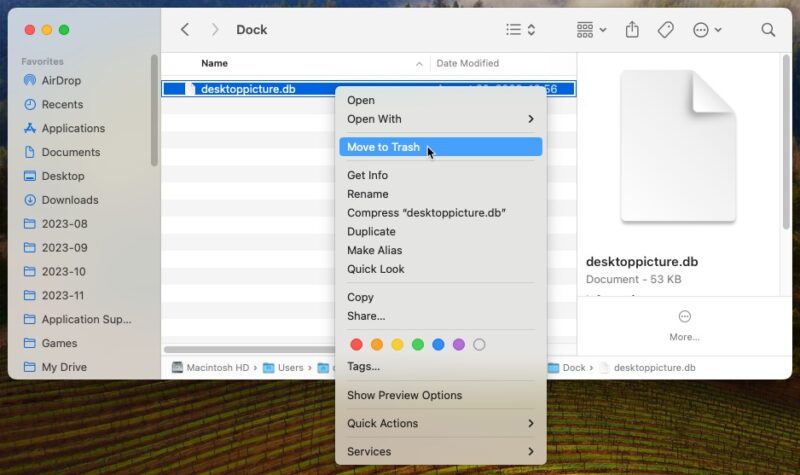
Choose a static wallpaper, and restart your Mac to create a new database file for your chosen wallpaper.
Customizing your Mac’s wallpaper should be a simple, enjoyable process, but when wallpapers revert to defaults after a restart, it can be a source of frustration. This guide has explored four effective methods to ensure your chosen wallpaper remains consistent. By following these steps, you can maintain your personalized desktop background without unwanted changes.
If you’re also experiencing similar issues with your Windows wallpaper, try these fixes to solve the Windows wallpaper turning black issue.
Image credit: Unsplash. All screenshots by David Morelo.
Our latest tutorials delivered straight to your inbox